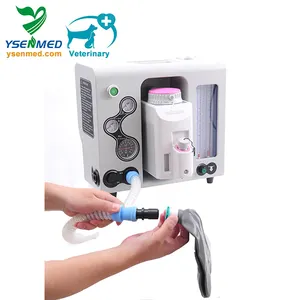







Anesthesia machines are pivotal in medical settings, providing a controlled mixture of gases and vapors to ensure patient sedation during surgical procedures. The anesthesia machine model category encompasses a range of equipment designed to meet diverse clinical needs. These models vary in functionality, design, and technological integration, catering to different medical environments.
The types of anesthesia machine models available include portable units for field operations and sophisticated models for complex surgeries. Key features to consider include the type of vaporizer, ventilator capabilities, and monitoring systems. The construction materials such as metal, plastic, and steel contribute to the durability and longevity of the machines. Models may operate through electrical, manual, or hydraulic means, with varying classes (class ii, class iii, and class i) indicating their compliance with medical standards and regulations.
Anesthesia machines are utilized across various veterinary and medical fields. They are essential in operating rooms, emergency units, and intensive care settings. The adaptability of these machines allows for their use in a range of procedures from minor surgeries to complex interventions. The anesthesia machine model chosen often reflects the specific requirements of the medical procedure and the patient's needs.
The construction materials of an anesthesia machine model are critical for ensuring functionality and safety. High-grade metals, plastics, and steels are commonly used, providing a balance of weight for portability and strength for durability. The choice of material affects the machine's resistance to wear and its ability to be cleaned and sterilized.
Modern anesthesia machine models offer enhanced safety features, such as advanced monitoring systems that track patient vitals and machine performance. They also provide improved precision in the delivery of anesthetic agents, contributing to better patient outcomes. The integration of electronic components has led to more user-friendly interfaces, allowing anesthesiologists to focus more on patient care rather than equipment management.
Selecting the appropriate anesthesia machine model requires a thorough understanding of the machine's features, materials, and the specific needs it serves. It is essential to consider the type of surgery, the patient population, and the clinical setting. While Alibaba.com does not endorse specific models or brands, the platform offers a comprehensive listing of suppliers providing a variety of anesthesia machines to suit diverse medical requirements.